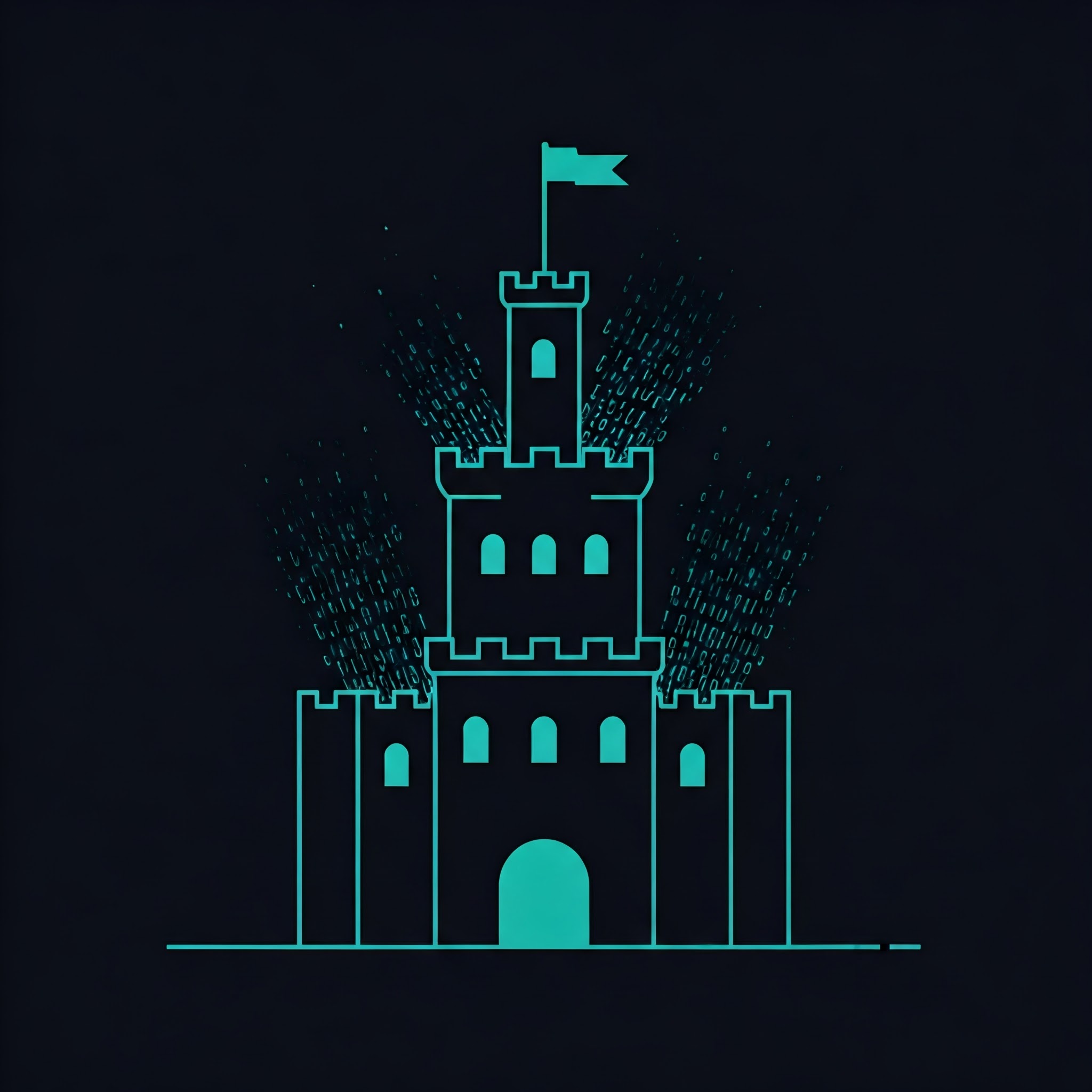
Imagine your computer or smartphone as a castle, and your personal data (photos, messages, passwords) as the treasures stored within the castle’s vaults. Surrounding your castle is a kingdom (your connected devices, accounts, and networks).
1. The Walls of the Castle (Firewalls):
The first thing you see around the castle is its high, sturdy walls. These walls represent firewalls that block unauthorized access to your systems. Just as invaders can’t get through without breaching the walls, hackers can’t access your system unless they bypass the firewall.
- Lesson: Always keep your firewall enabled and updated to protect your digital walls.
2. The Castle Gate (Passwords):
The gate is the only legitimate way to enter the castle, but it’s locked with a heavy key. This key represents your passwords or passphrases. The stronger the key, the harder it is for invaders (hackers) to force their way in.
- Lesson: Use strong, unique passwords and multi-factor authentication (MFA) to keep the gates secure.
3. The Guards (Antivirus Software):
Stationed at the gates and patrolling the walls are the guards. These guards represent antivirus and anti-malware software, constantly watching for intruders or harmful threats. If a spy (virus) sneaks in, the guards will catch and neutralize it.
- Lesson: Install reliable antivirus software and keep it updated to deal with threats.
4. The Hidden Tunnels (Phishing and Social Engineering):
Some crafty intruders might discover hidden tunnels leading into the castle. These tunnels are like phishing emails or scams that trick people into letting them inside. An unsuspecting villager (you) might open a tunnel by clicking a suspicious link or giving away secrets.
- Lesson: Think before you click. Verify links, emails, and messages, especially from strangers.
5. The Locksmith (Updates and Patches):
Over time, parts of the castle—like doors, locks, or walls—might get weak and damaged. If left unrepaired, attackers can easily break in. Regular repairs and upgrades represent software updates and security patches that strengthen vulnerabilities.
- Lesson: Always update your systems, apps, and software to lock out known threats.
6. The Spies and Saboteurs (Malware):
Sometimes, an enemy might send spies disguised as villagers into the castle. These spies are like malware or spyware—dangerous software that silently steals information or sabotages the system.
- Lesson: Avoid downloading files or software from untrusted sources.
7. The Treasure Map (Backups):
If the worst happens and the castle is breached, you still need a plan to recover your treasures. A backup is like having a secret map that shows where copies of your treasures are safely stored elsewhere, so you can rebuild.
- Lesson: Regularly back up your data to avoid complete loss during an attack.
The Story in Action
Let’s say a hacker (the invader) wants to break into your castle to steal treasures. If:
- The walls are strong (firewall),
- The gate is locked with a complex key (strong password),
- Guards are patrolling (antivirus software),
- All weak points are fixed (updates),
- The villagers are cautious (awareness about phishing),
- And you have a treasure map (backups),
The invader has almost no chance to succeed!
Conclusion
In this metaphor, cybersecurity isn’t just about one wall or one guard—it’s about building a layered defense like a fortified castle. You need walls, guards, strong gates, and a recovery plan. Every action you take, like using strong passwords or staying alert for phishing, keeps your kingdom (your devices and data) safe.













Be the first to leave a comment